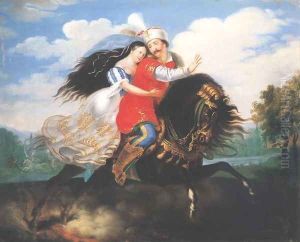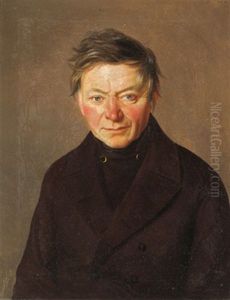Demeter Laccataris Paintings
Demeter Laccataris, born in 1771, is a somewhat obscure figure in the annals of art history whose life and works remain partially shrouded in mystery. Known primarily for his contributions as a painter, Laccataris hailed from the Ionian Islands, a region known for its rich cultural history and its significant influence on the arts during the 18th and 19th centuries. This era was marked by a blend of Italian and Greek artistic traditions, providing a fertile ground for Laccataris's development as an artist.
Laccataris's work is often characterized by its focus on religious and mythological themes, a common trait in the art of his time and region. However, detailed records of his specific works, exhibitions, or patrons are scarce, making it challenging to fully assess his impact on the art world. Despite this, it is known that Laccataris was active during a period of significant political and social change, as the Ionian Islands came under the influence of various European powers, including the Venetian Republic and later the British Empire. This context likely influenced his artistic output, though the exact nature of this influence remains a topic of speculation among art historians.
The date of death for Demeter Laccataris is not well-documented, contributing further to the enigmatic nature of his life and career. Despite the lack of extensive documentation, Laccataris's legacy as a figure in Ionian art is occasionally acknowledged in scholarly works that explore the region's artistic heritage. His contributions are seen as part of the broader tapestry of Greek and Italian art influences that characterized the Ionian Islands during a time of transition and cultural exchange.
In recent years, there has been a growing interest in uncovering more about lesser-known artists like Laccataris, with art historians and researchers dedicating efforts to explore archives, private collections, and historical records in hopes of bringing to light the life and works of artists who have remained on the periphery of mainstream art history. Through these endeavors, the hope is to gain a more comprehensive understanding of the diverse and rich artistic expressions that have shaped the cultural landscapes of regions like the Ionian Islands.








